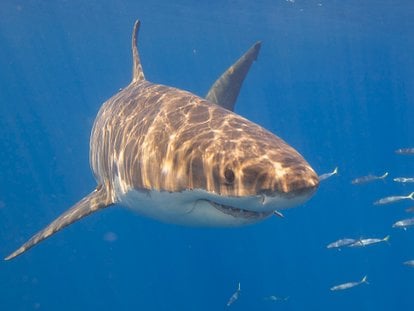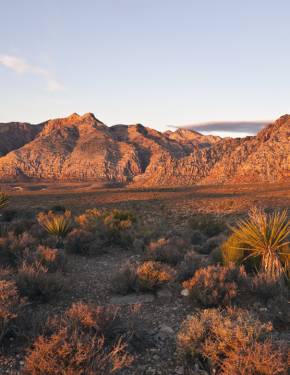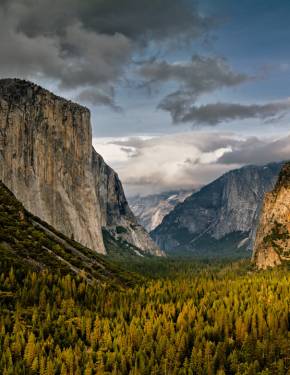Great White Sharks in California 2026
As ocean waters warm up, white sharks start their annual migration between Mexico and Southern California
Best time: August–September
Great white sharks, also known as Carcharodon carcharias, are among the ocean's most formidable predators. In California, these sharks garner both fear and fascination. Despite rare fatalities attributed to great white sharks in California's history, these sharks remain the only species in the region posing a significant danger to humans, highlighting the importance of awareness.
Life Cycle and Characteristics
Great white sharks can live up to 70 years, with males reaching sexual maturity around 9-10 years and females at 14-16 years. Females give birth to litters of two to fourteen pups, each about 4-5 feet long at birth. Young sharks, known as juveniles, typically inhabit warmer, shallow waters close to shore, which serve as their nursery grounds.
As adults, great white sharks grow up to 20 feet in length and weigh over 4,000 pounds. Their bodies are torpedo-shaped, designed for swift and powerful swimming, allowing them to reach speeds of up to 25 miles per hour in short bursts. They have a robust, conical snout and serrated, triangular teeth that can grow up to 3 inches long, ideal for tearing through the flesh of their prey.
Seasonal Patterns
Great whites are known for their seasonal migratory patterns, often traveling long distances across oceans. Some individuals have been tracked migrating from the coast of California to Hawaii and back, demonstrating their incredible endurance and adaptability in various marine environments. This migratory pattern is thought to be linked to breeding, feeding, and temperature preferences. When the ocean warms up near the U.S. Californian coast, sharks often migrate north along the coastline. Their peak sighting season in California is registered in August and September, although they can be spotted throughout the year.
Where to See
For those interested in observing great white sharks in their natural environment, California offers several prime locations. White sharks are most abundant in the waters along the west coast of the Baja California peninsula in Mexico. The Channel Islands, Point Conception, and areas near Santa Barbara beaches are also notable spots. Additionally, sightings are common in Santa Monica Bay, Long Beach, Huntington Beach, and San Clemente. In Northern California, the popular shark hotspots are Farallon Islands, Año Nuevo Island, and Tomales Point.
Red Triangle
California's "Red Triangle" is notorious for its high incidence of shark attacks. Over one-third of all great white shark attacks in the United States occur in this region. The region's moniker, the "Red Triangle," reflects its dangerous reputation, covering roughly 200 miles of coastline. It begins around Bodega Bay, extends southward to about 50 miles west of San Francisco, and concludes in the Big Sur region.
Behavior and Diet
However, it's not the beachgoers and surfers that attract these formidable predators. Instead, the Red Triangle is teeming with marine mammals such as elephant seals, harbor seals, sea lions, and sea otters, which are the preferred prey for great whites. As apex predators, great white sharks play a critical role in the marine ecosystem by maintaining the balance of species below them in the food chain. They primarily feed on marine mammals, as well as fish and seabirds. Their hunting strategy involves powerful, stealthy ambush attacks, using their keen sense of smell and ability to detect electromagnetic fields to locate prey.
Why They Attack Humans
Despite their preference for marine mammals, great whites occasionally come into contact with humans. Contrary to the popular myth that great whites mistake surfers for seals due to poor eyesight, these sharks actually have excellent vision. Their interactions with humans are often the result of their curious nature, leading them to "taste test" unfamiliar objects, including people. Globally, great white sharks are responsible for more human attacks than any other shark species. Nonetheless, it's important to remember that shark attacks remain rare, and the overall risk to beachgoers is still minimal. Since record-keeping began, there have been only 16 fatal shark attacks in California.
Guided Tours
For those interested in observing Great White Sharks, guided tours are available at various locations along the California coast. Participants might spot both juveniles and adults up to 20 feet long, and along the way, may also encounter humpback whales and dolphins. Polarized sunglasses are recommended for spotting these magnificent creatures, as dark shadows and dorsal tips breaking the water's surface are key indicators.
Cage Dive
A thrilling cage diving adventure provides participants with the chance to get into the water with great white sharks or observe their predatory behavior from the deck. No dive experience is necessary, with certified instructors guiding divers through everything they need to know. Whether diving or serving as a lookout for shark activity, participants play a crucial role in this adventure.
Location and Infrastructure
Most Great White Shark viewing locations are easily accessible from major Californian cities. For example, the Channel Islands can be reached via boat tours departing from Ventura or Oxnard, both of which are roughly an hour's drive from Los Angeles. Santa Barbara beaches and Point Conception are also within a short drive from urban centers, making them convenient for day trips. For those visiting Año Nuevo Island or Tomales Point, the nearest major city is San Francisco, about a 90-minute drive away. These areas are well-equipped with visitor facilities, including restrooms, picnic areas, and informational signage.









































































